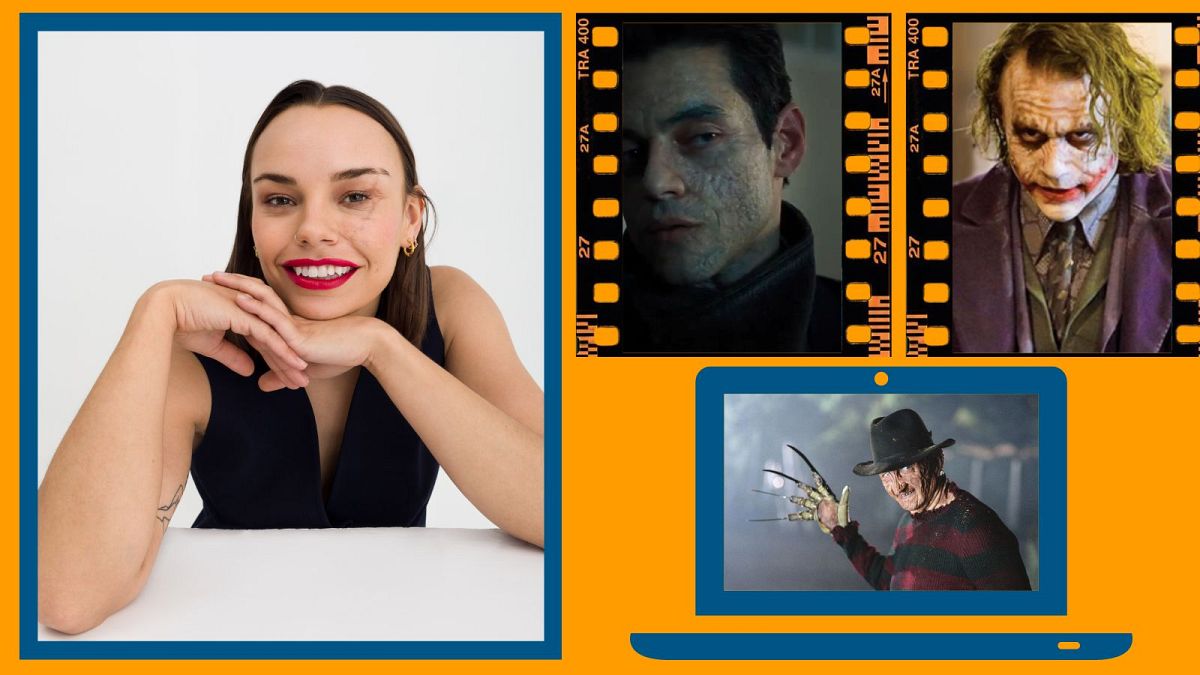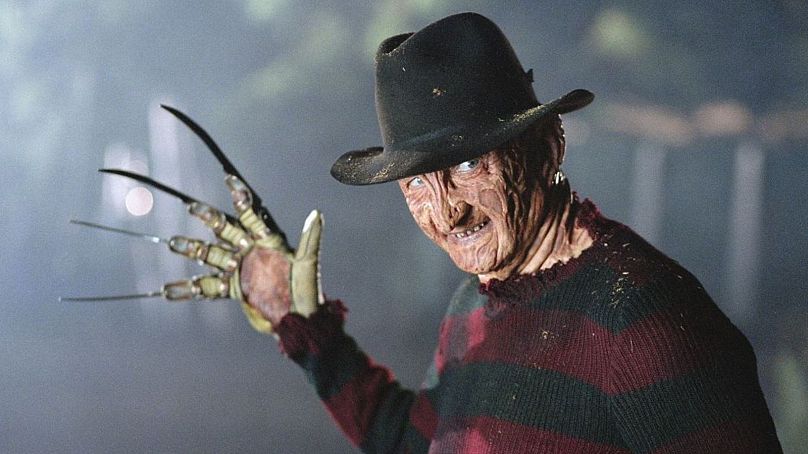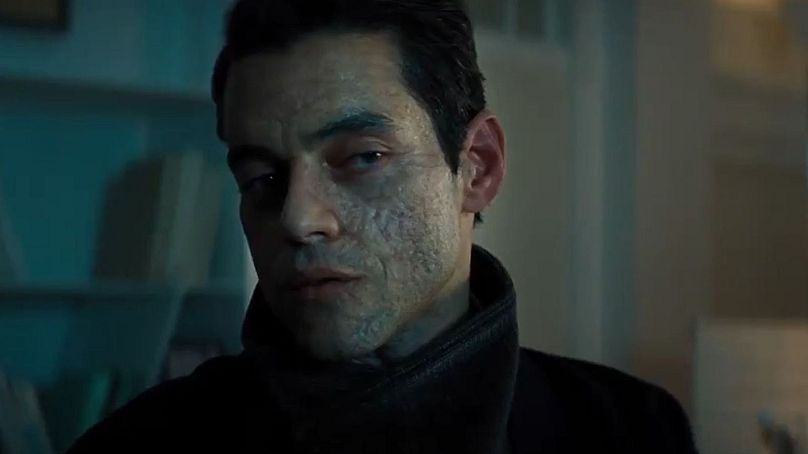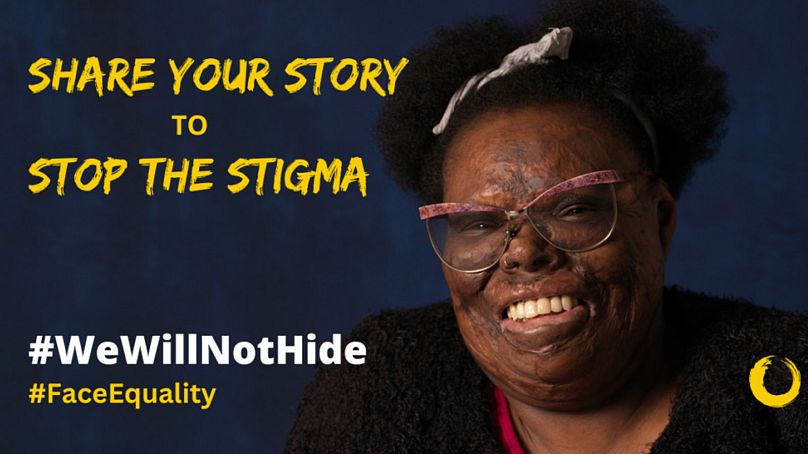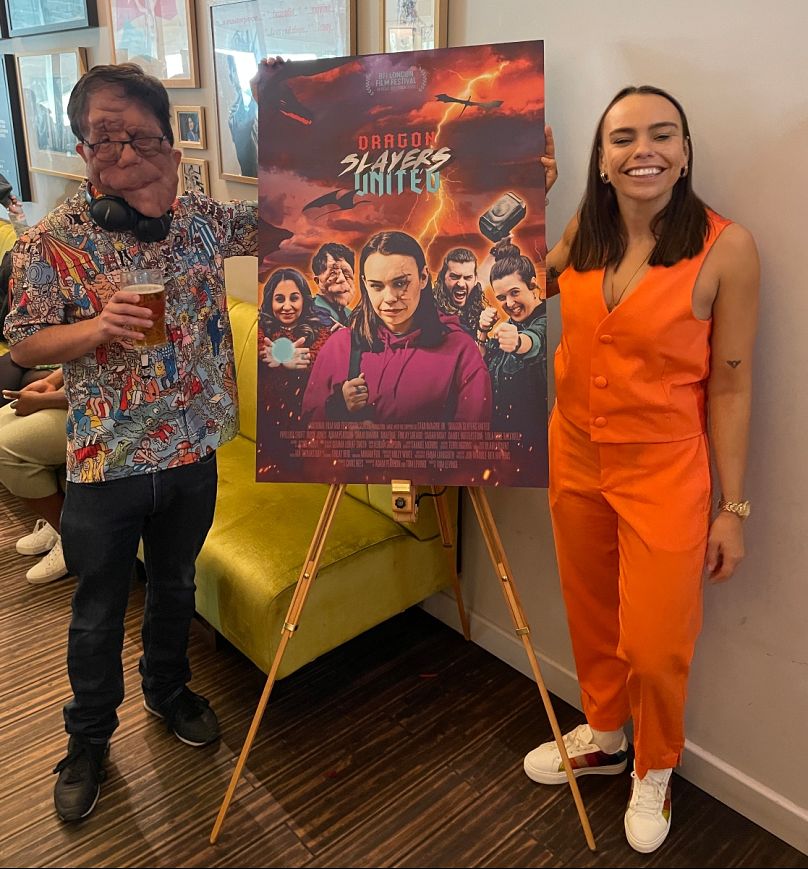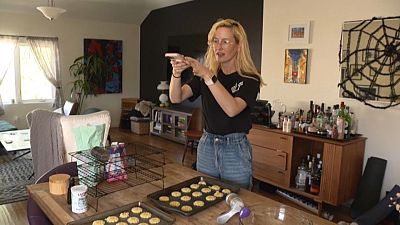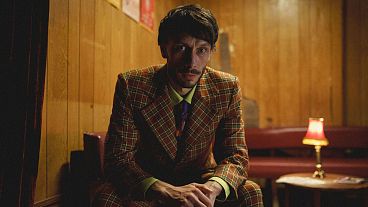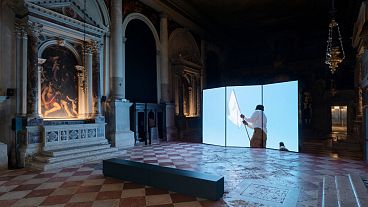Phyllida Swift, CEO of Face Equality International, speaks to Euronews Culture about why face equality charities are calling for film warnings in time for Halloween.
Halloween is fast approaching, and it’s the season for watching horror films and dressing up as evil characters with disfigurements from the movies.
It's a common trope in film history, especially facial scarring, which continues to thrive as a lazy shorthand for bad guys. From James Bond films to Marvel, Hollywood just can't seem to stop identifying villains by giving them facial scars or blemishes. And it's a trope which can have a lasting impact.
Face Equality International (FEI), and alliance of Non-Governmental Organisations, support groups and charities like the UK’s Changing Faces, represents those with a disfigurement or visible difference. They work at national and international levels to promote the campaign for ‘face equality’.
Alongside Changing Faces, they have taken matters into their own hands by writing to broadcasters such as Netflix, Amazon Prime and Apple TV, warning of the negative portrayals of people with disfigurements in horror films in the run-up to Halloween.
The letter, which is part of the 'I Am Not Your Villain' campaign, launched in 2018 with support from the British Film Institute, urges streamers to include an on-screen warning before showing negative stereotypes about visible differences.
Euronews Culture spoke to Phyllida Swift, the CEO of Face Equality International, to better understand the organisation’s mission, and how the TV and film industry still can’t stop itself from using tired visual shorthand when it comes to portraying evil on screen – at the detriment of an entire community.
Euronews Culture: Can you tell me a bit more about yourself and your role with Face Equality international?
Phyllida Swift: I’ve been working in face equality since I was in a car accident in 2015, during which I came out with significant facial scarring. As a result of that, I suddenly realised what a warped world we live in, and what pressure there is to look a certain way. All of a sudden, I was associated with this thing that I know society largely sees as the mark of a villain or a vulnerable person, never something regarded as beautiful.
I set out on a path to try to reshape that narrative and to try to reduce the stigma and prejudice experienced by people with all kinds of facial differences. I’ve been an activist ever since 2015, working with organisations like Changing Faces, and moving to Face Equality International, where we focus on building momentum for the global campaign. We started out in 2018, set up by a burn survivor Dr. James Partridge OBE, and he also set up Changing Faces UK. There was some element of a movement here in the UK and a bit of a movement in Taiwan, so it was about taking the mission global – across Europe, Africa, Latin America, North America, and we’re growing all the time.
Would you say that Halloween is a more stressful time for people with visible differences?
Yes, it absolutely is. It’s a very triggering time for anyone with a marked scar or condition which all too often we see replicated in the costumes people are wearing for Halloween. What seems like an innocuous thing for a child to just stamp a scar across their face or emulate being Freddy Krueger or a burn survivor, is essentially using our real-life experiences as costumes. And the focus of Halloween is to create fear, to be scary.
Even if it is light-hearted, no one with a facial difference wants to be associated with something scary, or villainous, or immoral. And we can’t take our faces - or our real-life experiences - off at the end of the celebrations. It comes with the weight of being associated with something immoral or villainous, and that hurts.
The issue is that it directly translates to our real lives, where we see young kids with facial differences being bullied or being referred to as ‘Scar’ or ‘The Joker’, and that then leads into adult life, where we see high instances of hate crime and stigma in the workplace, prejudice, and how Halloween is just perpetuating the problem.
It is cinematic shorthand, a trope that sees visual differences as synonymous with sociopathy. You mentioned Freddy Krueger, but it goes further back to silent cinema, then 'The Phantom of the Opera', and even the James Bond films - which have quite the track record when it comes to their villains being facially different. Why is it that this old stereotype refuses to die?
Personally, I believe that the world doesn’t yet understand that this is an equality issue in itself, that this is a marginalized community that is deserving of rights and protections, and a space in the diversity, equity and inclusion space. We’re all on that massive journey to understanding the role of media representation on representing minority groups, and this isn’t an isolated case of a group being vilified or having their real-life stories part of a wider stereotype. Sadly, what we are seeing is that Hollywood producers, directors, screenwriters have not yet understood their role in holding an entire community back or actually enabling them to thrive and have their real-life experiences played out authentically on our screens.
In the run-up to Halloween, Face Equality International and Changing Faces recently wrote to broadcasters, warning of these negative portrayals, especially in horror films. Is the hope to get a caveat added before a film starts?
Absolutely. This is something that I’ve been campaigning for ever since we saw Disney really taking a pioneering approach to producing disclaimers on films that were perpetuating old racial stereotypes, which was really progressive. So, if they are willing to do that for one marginalised community, why can they not do that for the facial difference community? That’s why groups like Changing Faces and FEI are trying to appeal to streaming platforms that can absolutely take a great deal of leadership on this.
What is so insidious about what this media representation and the negative tropes are doing is that they are indoctrinating young minds. I personally have had children of primary school age tell me that my face is scary and they don’t like it. But I have young nieces, who are absolutely fine. So this is very much learned behaviour, and it’s the films that are telling young minds not to trust someone with a facial difference. And that’s what’s scary. Our faces are not scary. What’s scary are the warped perceptions that we are inflicting upon younger generations.
Have you had any responses from the streamers?
Not that I’m aware of, no. We’ve been shouting into a vacuum for a very long time on this issue. We at FEI produced a position paper earlier on in the year, off the back of the awards season. We also tried to reach out to several producers of recent films – one of which being JLo’s The Mother, for example, which was a kick in the teeth because it came out during Face Equality Week back in May. It had Jospeh Fiennes playing a scarred-up villain... The response, despite us campaigning on this for years and doing TEDx talks, is very limited as it stands. The only leadership I’ve seen in this is from the British Film Institute.
Right, because the BFI announced that it would no longer fund films in which villains appear with facial scaring... Did that promising initiative not trigger more responses?
No, not really. Where this is interesting is that there have been great steps forward in terms of disability representation. We’re seeing Reese Witherspoon’s production company (Hello Sunshine) working much more closely with the disability community, which is amazing. Sadly, I don’t think the world quite understands yet that that should extend to people with disfigurement. The inclusive efforts that are being extended to the disability community right now absolutely should extend to visible difference, and sadly, we’re not seeing the bold statements that are needed from the likes of the BFI from the wider film and TV industry.
In your opinion, what more could be done to raise awareness, in order to instigate meaningful change?
It takes leadership from screenwriters, producers, directors to authentically include lived experience within the entire creative process. Behind the scenes as well. The reason that these stories are ending up being greenlit and no one is raising their hand to say ‘Actually, this is rather problematic!’ is that the representation behind the scenes is very limited as well. So, this is a massive issue that goes far beyond simply on screen representation. It’s very much about creating opportunities for marginalised groups to get into the industry in the first place.
But also, come and speak to us! We’re FEI, and we can help to facilitate sensitivity readers, training programmes. We are here, we want to be asked, and we don’t want to have to call people out in public spaces. We are here very much to be consulted with, so that we don’t have to call out every film that comes out and we see this trope playing out on the screen. We want to help – we do not subscribe to cancel culture, but we absolutely subscribe to growth and learning, and including the community in a respectful and representative manner.
I really had to rattle my brain to come up with examples of the community being respectfully represented in major productions. The only I could think of was Jonathan Glazer’s Under The Skin, starring Adam Pearson... And that 10 years ago!
Yes. In fact I’ve just starred alongside Adam Pearson in a short film, as part of a scheme to get diverse writers into the industry. It’s funded by Disney, and this short film, Dragon Slayers United – which screened at the London Film Festival this year - is very much living and breathing inclusion of people with disabilities and disfigurement. So there are pockets of great work going on.
But like you say, there aren’t very many positive examples of representation of disfigurement as it stands in big films. We can look to the likes of Wonder (by Stephen Chbosky), the film that came out several years ago which starred Julia Roberts, and there was a young boy with Treacher Collins syndrome. But it was prosthetics. It wasn’t real. And this is where the issue gets really nuanced because yes, we want representation, but we want representation of the people that actually have that lived experience, rather than reducing opportunities for someone with it.
The pledge that the BFI made was great, but it doesn’t address the whole issue. What we want to see is incidental representation. We don’t want to ban opportunities for people with scars to play a role that might be on the fence – no one is ever entirely good. The problem is that right now, disproportionately, the representation we see is negative, and it plays into that trope.
We’re not saying that we never want to see a baddie ever again with a disfigurement, but we just want to see that incidental, positive representation – those role models that are certainly needed for younger generations across our screens as well.
Click here to find out more aboutFace Equality International and read theirPosition Paper and Call To Hollywood. And think twice about your Halloween costume this year.
